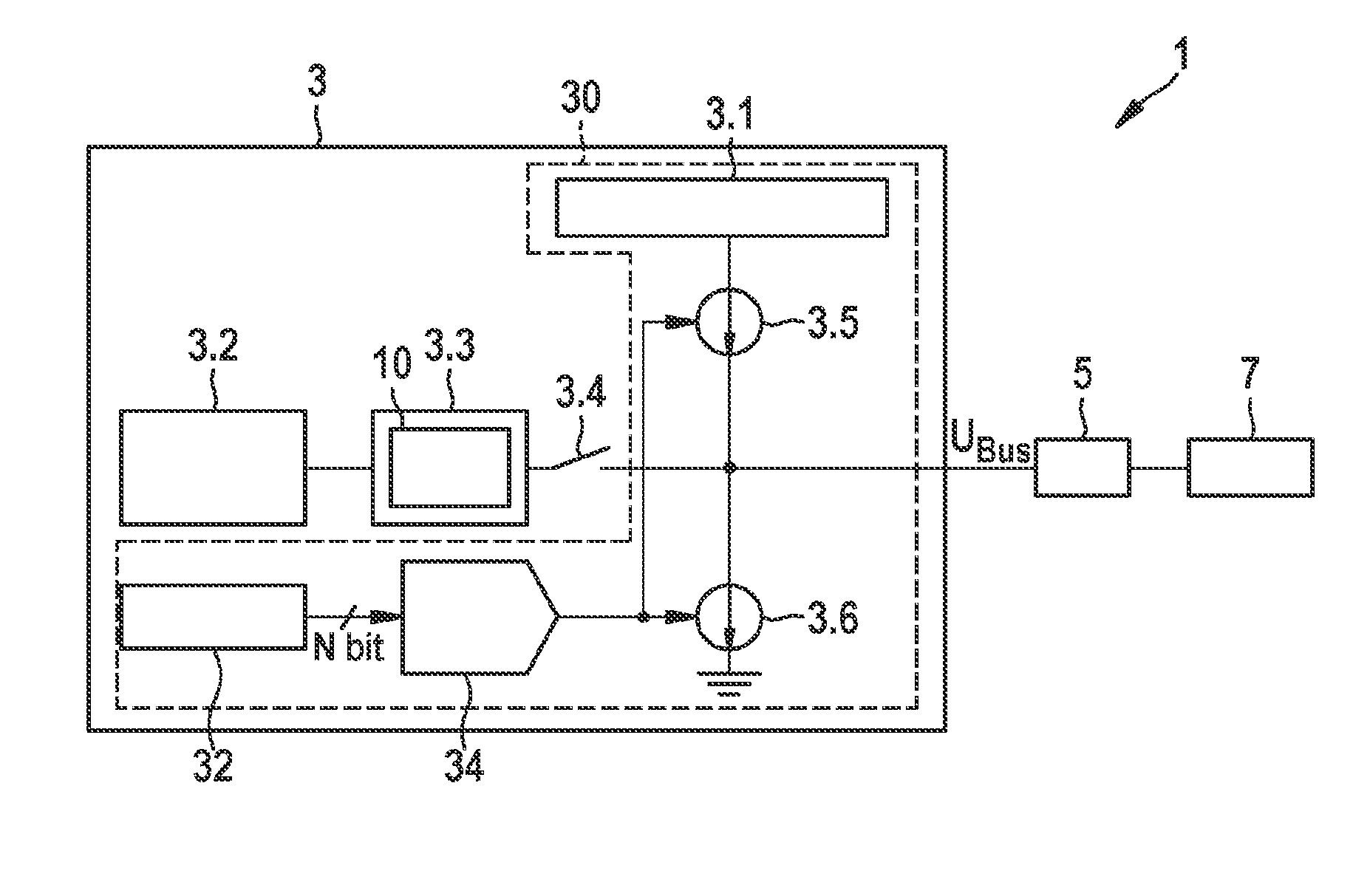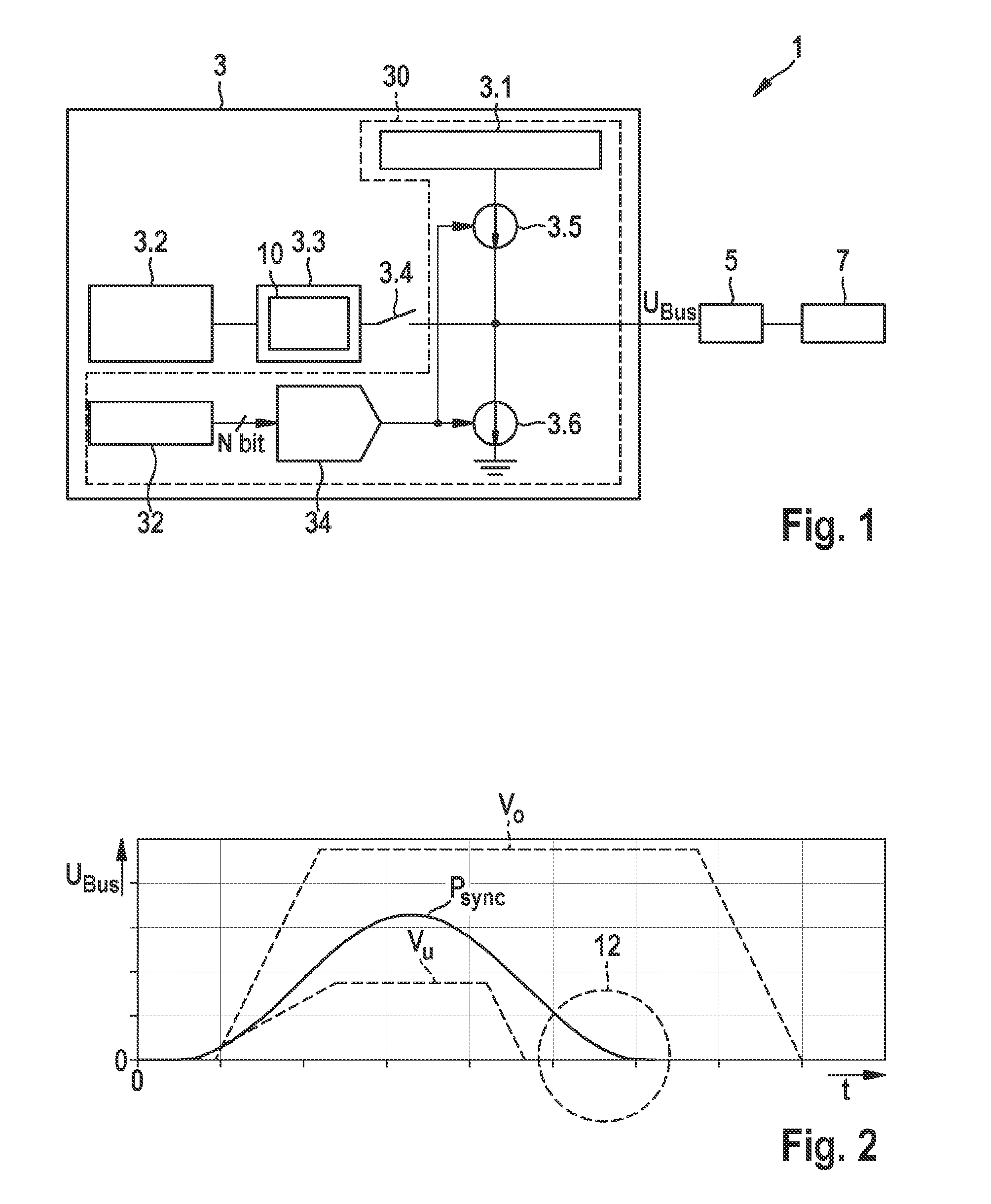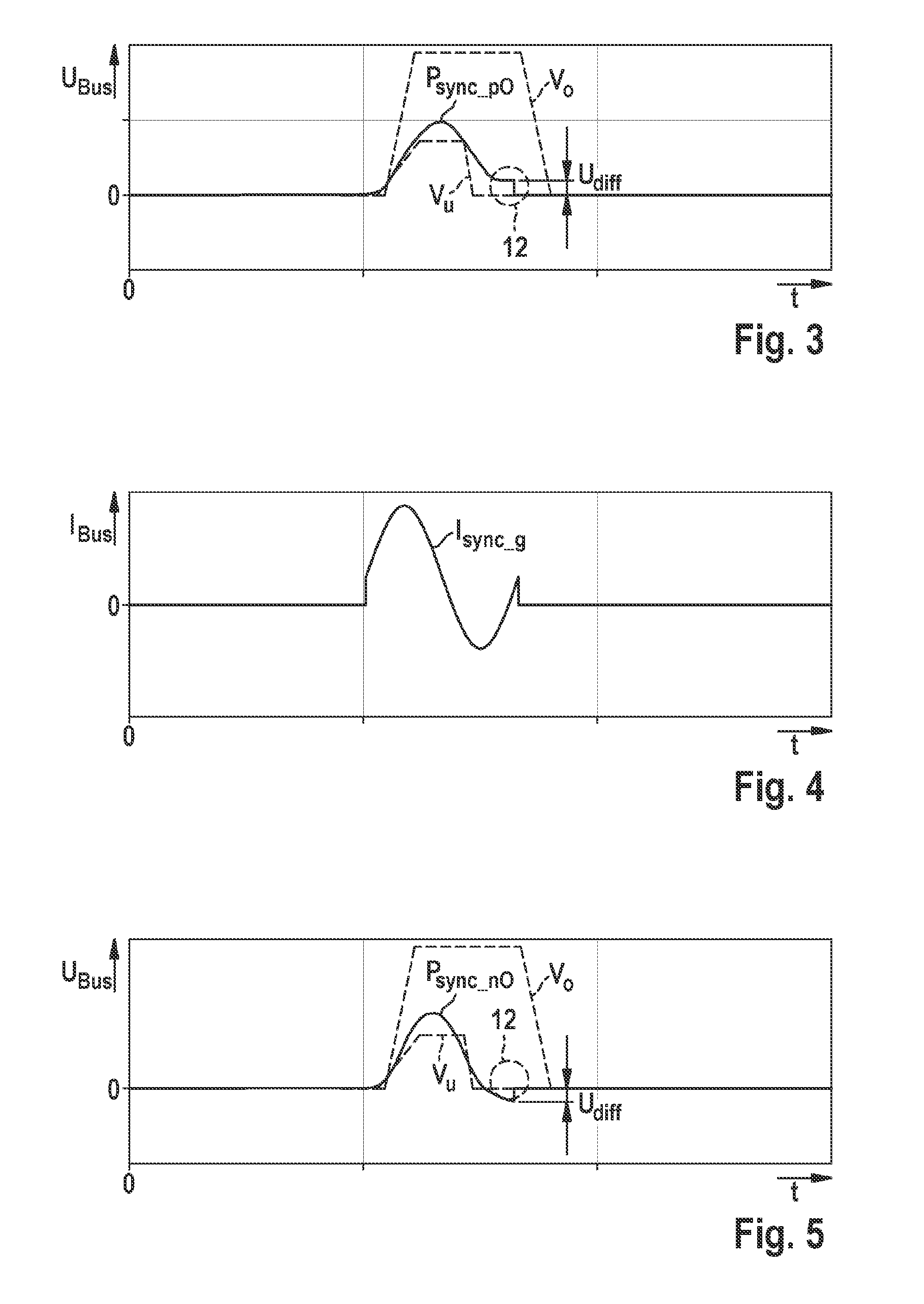Receiving arrangement for a control device in a vehicle, and method for generating a synchronization pulse
a technology of synchronization pulse and control device, which is applied in the direction of pulse technique, data switching network, synchronization signal speed/phase control, etc., can solve the problems of negative and positive voltage offset or positive voltage difference at the end of synchronization puls
- Summary
- Abstract
- Description
- Claims
- Application Information
AI Technical Summary
Benefits of technology
Problems solved by technology
Method used
Image
Examples
Embodiment Construction
[0024]As is evident from FIG. 1, the exemplifying embodiment depicted of a sensor assemblage 1 encompasses a data bus 5, at least one sensor 7, and an exemplifying embodiment of a receiving assemblage 3 according to the present invention for a control device in a vehicle. Receiving assemblage 3 according to the present invention encompasses a voltage generator 30 for generating a synchronization pulse Psync, having a first voltage source 3.1, a current source 3.5, and a current sink 3.6. Voltage generator 30 generates the synchronization pulse Psync by way of current source 3.5 and current sink 3.6, substantially as a sinusoidal oscillation, by charging and / or discharging a bus load. Receiving assemblage 3 outputs the synchronization pulse Psync via data bus 5 to the at least one sensor 7 for synchronization of a subsequent signal transfer. According to the present invention, voltage generator 30 compares a voltage value at the end 12 of the synchronization pulse Psync with a corres...
PUM
 Login to View More
Login to View More Abstract
Description
Claims
Application Information
 Login to View More
Login to View More - R&D
- Intellectual Property
- Life Sciences
- Materials
- Tech Scout
- Unparalleled Data Quality
- Higher Quality Content
- 60% Fewer Hallucinations
Browse by: Latest US Patents, China's latest patents, Technical Efficacy Thesaurus, Application Domain, Technology Topic, Popular Technical Reports.
© 2025 PatSnap. All rights reserved.Legal|Privacy policy|Modern Slavery Act Transparency Statement|Sitemap|About US| Contact US: help@patsnap.com



